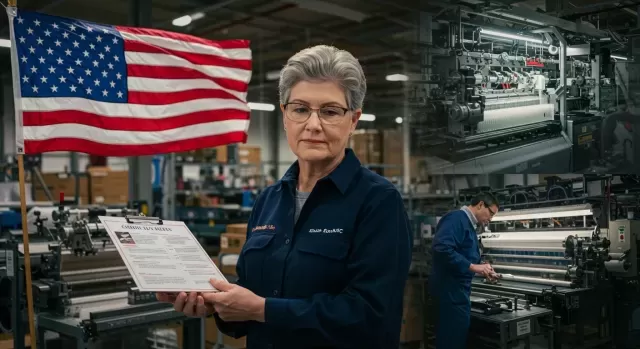Navigating the "Made in USA" Maze: A Consumer's Guide to Avoiding Deceptive Marketing

American-made products hold a special appeal. Surveys consistently show that many U.S. consumers actively seek out goods bearing the "Made in USA" label. This preference is fueled by a mix of patriotism, perceived quality, and a desire to support the domestic economy. However, the promise of "Made in USA" isn't always what it seems. The Federal Trade Commission (FTC) is actively working to crack down on deceptive marketing practices, ensuring that companies accurately represent the origin of their products.
The FTC's Stance: Defining "Made in USA"
The FTC has a clear definition of what qualifies for a "Made in USA" label. To claim a product is "Made in USA," a company must demonstrate that "all or virtually all" of the product is made in the United States. This encompasses various factors, including:
- Final Assembly and Processing: The final stages of production must occur in the U.S.
- Significant Processing: All significant manufacturing processes must take place within the country.
- Component Sourcing: Products made with "all or virtually all" U.S.-sourced components also meet the criteria.
The FTC recognizes that this is a "flexible measure" that considers the proportion of U.S.-based manufacturing costs and the significance of foreign inputs to the product's ultimate form and function. Determining whether a product truly qualifies can be intricate and is often assessed on a case-by-case basis.
Why the FTC is Cracking Down
The FTC's enforcement efforts are driven by the desire to protect consumers and ensure fair competition. When companies falsely claim their products are "Made in USA," they mislead consumers who are actively seeking to support American businesses and workers. This deceptive practice also undermines legitimate companies that invest in domestic manufacturing.
Recent Enforcement Actions
The FTC has ramped up its enforcement efforts in recent years, particularly during its designated "Made in the USA" month in July. The agency has issued warning letters to companies, including major retailers like Amazon and Walmart, regarding potentially deceptive claims made by third-party sellers on their platforms.
Here's a look at some recent examples of companies facing penalties for misleading "Made in USA" claims:
- Instant Brands (Pyrex): Ordered to pay a $129,416 fine for falsely claiming that Chinese-made products sold on Amazon were "Made in USA."
- Williams-Sonoma: Charged with a $3.2 million civil penalty for mislabeling products made in China and other countries as "Made in USA." This was the largest civil penalty in a "Made in USA" case to date.
These cases demonstrate the FTC's commitment to holding companies accountable for deceptive marketing practices.
The "Made in USA" Labeling Rule
The FTC finalized the Made in USA Labeling Rule in August 2021, granting the agency the authority to levy civil penalties against companies that violate the "Made in USA" standard. This rule has significantly strengthened the FTC's ability to enforce accurate labeling.
Consumer Preference and the "Made in USA" Premium
Numerous surveys highlight the strong preference among American consumers for American-made goods. A recent report by Integris found that approximately three-quarters of U.S. consumers prefer products made in the USA. This preference is often attributed to:
- Patriotism: A desire to support American workers and the domestic economy.
- Quality Perception: A belief that American-made products are of higher quality.
- Environmental Concerns: A recognition that locally produced goods may have a smaller environmental footprint due to reduced transportation.
- Supply Chain Reliability: in the aftermath of the global disruption
It's important to note that while consumers express a preference for "Made in USA" products, purchasing decisions are often influenced by other factors, such as price and overall quality.
Consumer Checklist: Spotting Potential Misleading Claims
- Scrutinize the Label: Carefully examine the product label for any indications that it might be imported or manufactured overseas.
- Check the Fine Print: Be wary of vague or ambiguous language regarding the product's origin.
- Compare Prices: If a product claiming to be "Made in USA" is significantly cheaper than similar products, it might be a red flag.
- Consult Online Reviews: Look for reviews that specifically address the product's origin or manufacturing quality.
- File a Complaint: If you suspect a product is falsely labeled as "Made in USA," file a complaint with the FTC.
What the future looks like?
The FTC continues to prioritize enforcing "Made in USA" claims. The agency's recent actions and the establishment of the Made in USA Labeling Rule demonstrate its commitment to protecting consumers and ensuring fair competition. Consumers can expect to see continued scrutiny of companies' marketing practices and increased enforcement actions against those who violate the "Made in USA" standard.
By staying informed and vigilant, consumers can make informed purchasing decisions and support businesses that are genuinely committed to manufacturing in the United States.
| Feature | American-Made Goods | Imported Goods |
|---|---|---|
| Consumer Preference | High (approximately 75% of U.S. consumers) | Lower, unless other factors (price, specific features) dominate |
| Quality Perception | Generally perceived as higher quality | Varies widely depending on the country of origin and brand |
| Price Point | Often higher due to labor costs and regulations | Often lower due to lower labor costs and fewer regulations |
| Environmental Impact | Potentially lower due to shorter transportation distances | Potentially higher due to longer transportation distances |
| Economic Impact | Supports American jobs and the domestic economy | May support foreign economies |
| Supply Chain | Potentially more reliable, less susceptible to disruptions | Potentially more susceptible to global supply chain issues |